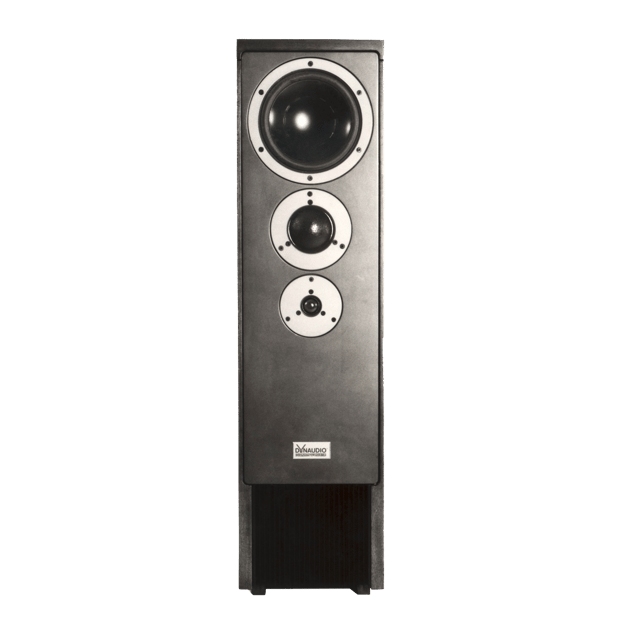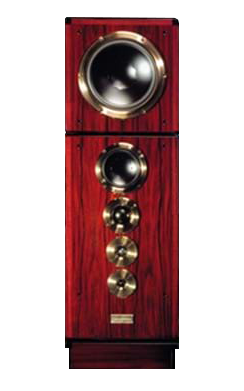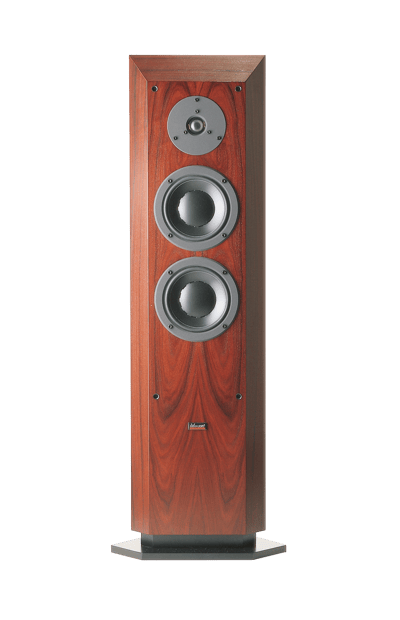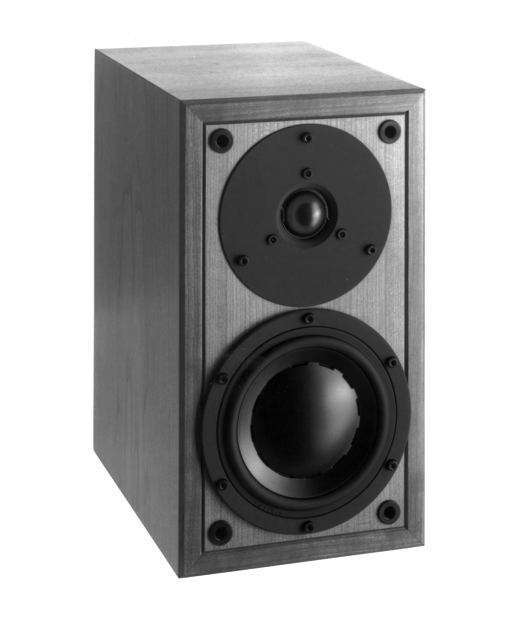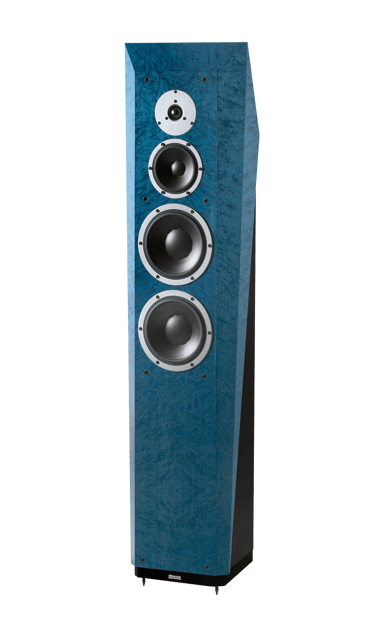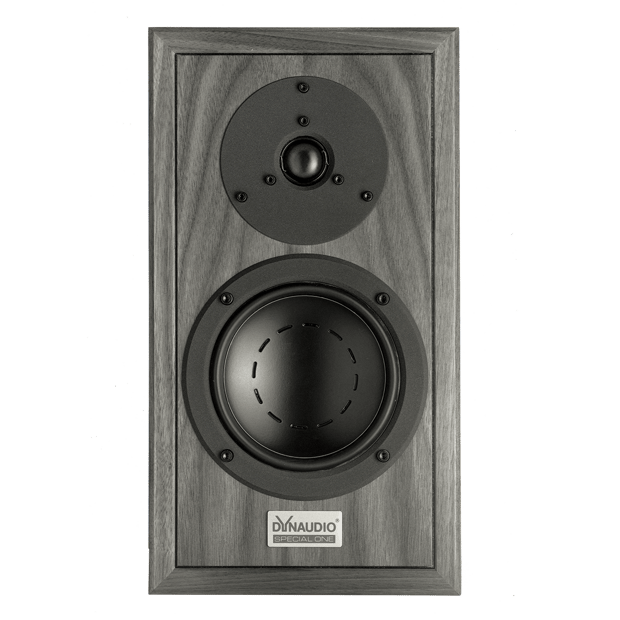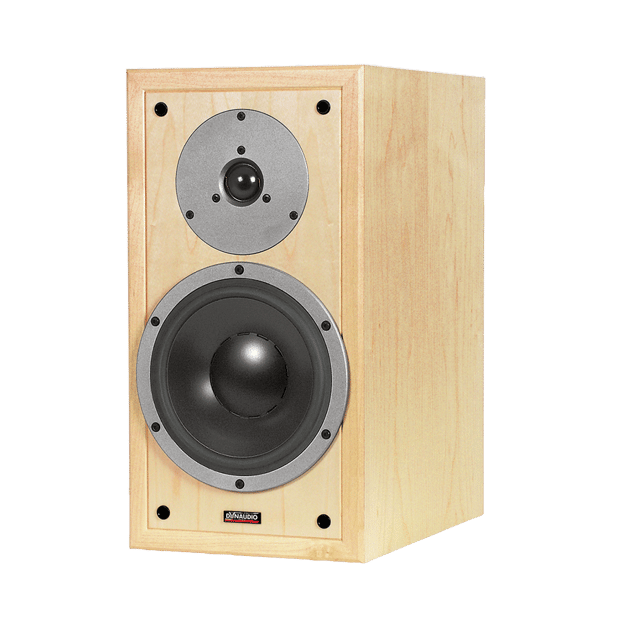- Home
- >
- Discontinued Models
- >
- Editions
- >
- Special One
The Project
Producing small loudspeakers with extraordinary performance is a Dynaudio tradition. As early as 1984, Dynaudio created two compact loudspeaker systems which attracted favourable attention because of the innovative technology and performance capabiljties offered. These systems became successful and contributed to the subsequent trend toward small, high quality speakers.
We have continued in this direction, and the Special One is the result of a research project directed at defining the possibilities of small system performance. We wished to know what could be achieved if drivers, crossover filters, and amplifiers are operated under ideal conditions. We had no limitations or commercial requirements, and every problem could be pursued to its solution.
As we became more involved with this investigation, we realized that the results were so interesting that we could not dismantle our prototypes and file away the research for future development, when state of the art reached finally the level of our projections. The decision was made to produce this audiodelicacy for only a few gourmets who could appreciate the experience.
Speaker Driver Selection
The driver units we decided upon were refined and improved until they exceeded anything we had ever done. When we were sure of their laboratory excellence, we began again matching the drivers to the cabinet requirements. Making our own drivers we are able to interface driver and cabinet instead of during in the crossover with countless components.
Woofers
For the low frequency range we have used a special version of the 17 W 75.
This woofer has a balanced 1:2 ratio between the diameter of the piston and the diameter of the voice coil. In this case the large voice coil allows very high power handling, and, at higher frequencies, the outer surface of the diaphragm is decoupled acoustically from the inner surface, so the mass of the dispersing surface becomes smaller as the frequency rises. The result is weIl balanced dispersion and phase response that makes possible accurate stereo imaging. The controlled phase and amplitude response in the woofer's upper range is a precondition for a seamless crossover to the high frequency driver. Every Facette is built according to the principle of non-parallel surfaces: the cabinet panels' influence on sound is almost eliminated.
Tweeter
Recently Dynaudio introduced the Esotar 330 D high frequency transducer. This unit was the culimination of many years of development, and it has been used in state of the art systems from several manufacturers.
This tweeter's capability was taken into account when developing the Special One. Among the many qualities of special usefulness were the excellent pulse response. This is a result of the resonance damping of the swinging system through the use of a special magnetic fluid in the air gap. Ringing in the response is prevented without affecting the dynamic characteristics of the impulse. This system reduces distortion and phase error to very low levels. The most important aspect of the Tweeter drive unit is an ideally vented magnet system that prevents different pressure potentials among the areas of the chambered interior. The chambered rear system allows for a low resonance frequency and is ideally suited for the demanding but sonically superior 6 dB crossover rolloff.
Every cabinet is created by a master craftsman; you`ll never find a production line on our premises.
Soft Dome
The support material of the dome is made of fine mesh fabric. Before use it is carefully impregnated with a special fluid to give the dome the necessary stability. After mounting the dome and the voice coil in the magnetic system, it is given an additional coating to provide balanced damping and to eliminate resoances.
In the lower tweeter frequencies, sound dispersion comes from the entire surface of the dome. But as frequency rises, the top of the dome is decoupled mechanically, and sound dispersion is taken over by the outer areas of the dome surface. This means that moving mass and dispersing surface is reduced. Dispersion and pulse measurements on Dynaudio tweeters conclusively indicate this accurate response. In spite of a trend toward metal domes, Dynaudio has continued to develop the soft dome technology. We know that with metal domes, resonances inherent in the crystal structure of the material create resonances in the response that cannot be avoided. Such resonances are sometimes found above 20.000 Hertz. They are seldom indicated in response tests that are usually terminated before the point of rapidly rising output. These resonances should not be neglected, however. Manufacturers of CD players, for example, are eagerly trying to eliminate small pulse errors around 20 kHz and to filter interference signals at even higher frequencies. They believe that these errors affect the reproduction accuracy.
Crossover Filter
The Special One crossover is responsible for the distribution of the signals between the woofer and the tweeter. But it must also direct a whole series of modifications of the drive response combination. Large coil and premium polypropylene capacitors are required to carefully filter small rest ripples in the response. The reserves of these premium parts provide a sonic stability and tonal balance on any musical material.
Capacitors
For the last several years Dynaudio has been testing for the best film capacitors.
We now think we have a special formulation that is clearly better than all other types. Even in those sections of the circuit which are not in the signal path, this capacitor shows a positive sonic influence. By using these capacitors we have improved the high frequency reproduction; the dynamic resolution is sharper, while tendencies toward "sharpness" in sound disappear. The Special One offers ideal conditions: perfect basic properties of the tweeters and perfect electrical response of the capacitors. This combination leads to the detailed reproduction in the tweeter range and stunningly realistic stereo imaging.
Impedance
Before developing the actual filter, the impedance response of the drivers was smoothed with the help of exactly calculated circuits.
This not only influences the optimum functioning of the crossover, but it also enhances the cooperation between amplifier and loudspeaker. Even the tweeter's impedance rise above 15 kHz is audible if the drive unit is precise enough to accurately reproduce these frequencies. Because we take so much care in creating a steady impedance response of the driver combination, the phase correction circuit can respond close to its theoretical potential.
First Order Filters
Dynaudio developments are based to a great extent on the application of 6 dB, or first order filters.
Often in promotional literature, the impression is given that the use of filters with a high slope, 12 to 24 dB per octave, is a quality feature of loudspeaker systems. This approach has some validity when using drivers of standard construction and a narrow frequency range. Here crossovers with a high slope may help to maintain a smooth frequency response. But on the other hand, the higher the slope of the filter, the worse the pulse response of the drive unit. Since music consists of dynamic signals with many pulses and few pure sine waves, reproduction suffers from filters with a high slope. Therefore, Dynaudio uses only first order filters. Even if this requires highly optimized drive units that are difficult and expensive to manufacture, the musical result shows that it is worth our efforts.
Phase
By means of carefully directed structural parameters the phase response of Dynaudio drivers is optimized.
The remaining difference around the overlap of woofer and tweeter are balanced by a very sensitive compensation circuit. This circuit uses only high quality components with narrow tolerances and very fast recovery. Long term stability is also a significant factor in the overall design of the compensation circuit. Until recently academic researchers as well as most system manufacturers have discounted the influence of phase on the sound of a loudspeaker system. But from the very beginning, Dynaudio has considered the phase response of a loudspeaker to be just as important as any other aspect, because it has been a known fact that stereo imaging and rear channel information in quadraphony are based to a large extent on differences in phase. A loudspeaker may have an accurate frequency response, but if its phase response is irregular, the consequence will be blurring, exaggerated musical sounds, or harsh tonalities.
Impedance Correction
Even if all of the aspects discussed above have been carefully observed, the impedance response will still have ripples which can only be controlled by an impedance compensation network.
When properly constructed and employed, the impedance response between 100 Hz and 1.000.000 Hz is linear at 4 ohms. The connected amplifier is presented a nearly pure resistive load. The power amplifier can be operated under ideal conditions. Usually a loudspeaker is a difficult load for an amplifier, because complex signal portions generated by the capacitors and inductors require high circuit stability. But in the Dynaudio engineering approach, the loudspeaker system presents the ideal load for the amplifier and the sonic combination is always as good as the potential of the electronics.
Subjective And Objective Evaluation
Most audio enthusiasts have encountered components that share almost identical structure, design, and performance levels yet exhibit very different sonic properties.
It is the fuel that fires the quest for audio excellence. This is a phenomenon that we have often confronted in crossover design. There are several paths that will yield a similar response measurement, but in listening tests the products will have a personal signature that seems out of proportion to the design differences. In the design of the Special One two different technical approaches were followed, and then each was refined for precise measurable fidelity to the original signal. At each step there were extensive listening tests. These tests were performed independently, but as they progressed the two designs began to resemble each other in ways the design team had not foreseen. For example, for the first time ever we used a PC board layout that had no conductor paths. All components are connected directly or with large cable diameters. Inductance coupling of the coils on the copper coating was carefully avoided as well. This was an important experience because we recognized that many results cannot be generalized beyond the immediate experiment. Dynaudio products will continue to be designed experimentally; the designs will be ratified through patient critical listening.
Inductors
Well designed inductors with large wire diameters can often clearly improve the accuracy of response, During the design of the Speacial One systematic tests with different coil formulation were made.
We were able to learn that "The thicker the wire, the better the results" was often not the case. We found that the Q (or quality) of the inductor influences the sonic results at high frequency range, is an important contributor to the fidelity of the system. Owing to this experience, Dynaudio developed coils which have several conductors with different diameters in parallel, an advancement we have named CWC coils. Application of these coils makes possible a precise bass reproduction with more dynamic range and less coloration. We believe CWC coils will play an important role in all future Dynaudio products, though they must be part of the original filter design and loudspeaker project in order for the improvement to be maximized.
The Result
The Special One sounds like no loudspeaker has in the past. It has no special musical material but allows you to enjoy all music to its fullest potential. It is unobtrusive but intense. For those audio enthusiasts who are looking to improve the chain of high fidelity reproduction, the Special One will certainly stand up to a detailed evaluation; for those who love music the Special One will be a joyful experience.


Special One
Specifications
- Status Discontinued
- Segment Home
- Series Editions
- Type Bookshelf
- Sensitivity (dB @ 2.83V/1m) 82
- IEC Power Handling (W) 150
- Rated Impedance (Ohm) 4
- Box Principle Bass reflex rear ported
- Crossover 2-way
- Tweeter 28 mm Soft Dome
- Midrange/Woofer 17 cm MSP
- Weight kg 9
- Weight lbs 19.8
- Width mm 220
- Height mm 400
- Depth mm 280
- Width inches 8 5/8
- Height inches 15 6/8
- Depth inches 11
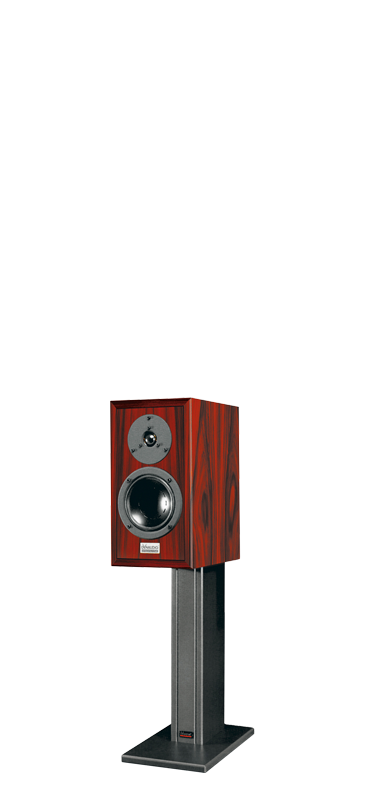
Editions
- Status:
- Segment:
- Series:
- Type:
- Sensitivity (dB @ 2.83V/1m):
- IEC Power Handling (W):
- Rated Impedance (Ohm):
- Lower Cutoff (Hz @ +/- 3 dB):
- Upper Cutoff (kHz @ +/- 3 dB):
- Box Principle:
- Crossover:
- Tweeter:
- Midrange:
- Midrange/Woofer:
- Woofer:
- Weight kg:
- Weight lbs:
- Width mm:
- Height mm:
- Depth mm:
- Width inches:
- Height inches:
- Depth inches:
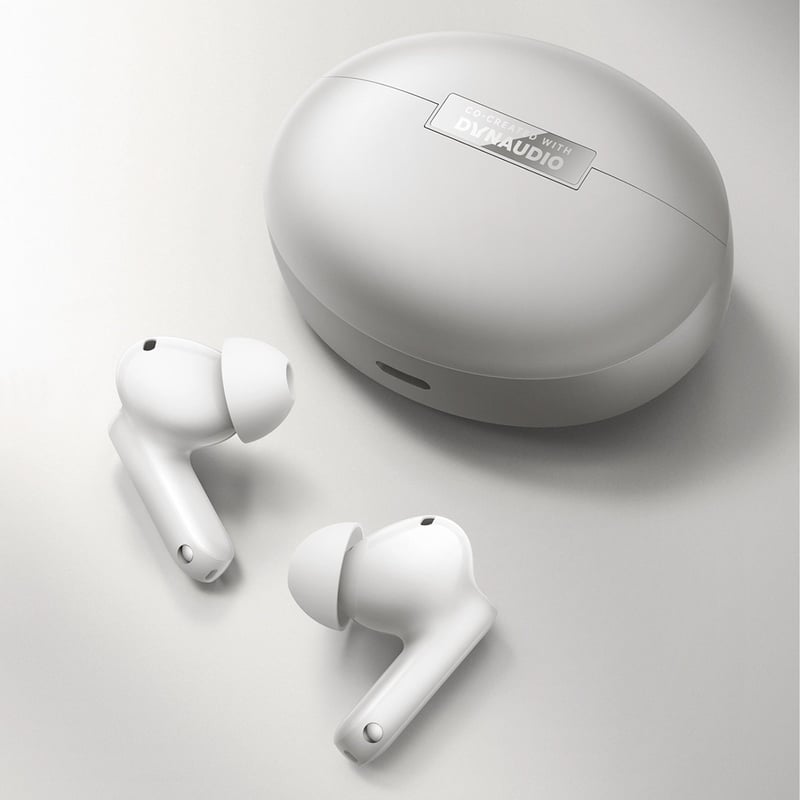
Dynaudio teams-up with OPPO for Enco X3s earbuds
We're thrilled to announce the release of OPPO's Enco X3s true wireless noise cancelling earbuds, with Dynaudio sound tuning.

Why are there holes in our speaker drivers?
On this episode of Ask The Expert, Otto explains why our speaker cones have small, rectangular slots around the central dome. Far from being a random ...
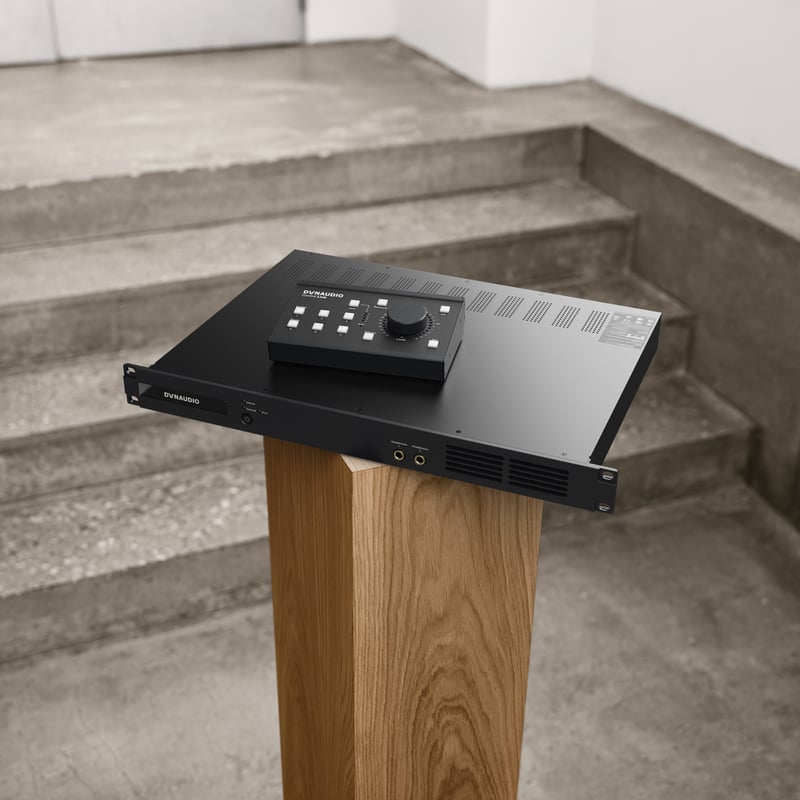
Dynaudio Control series
We are pleased to introduce the Dynaudio Control series: a suite of next-generation audio tools engineered to serve as the central monitor controller ...




